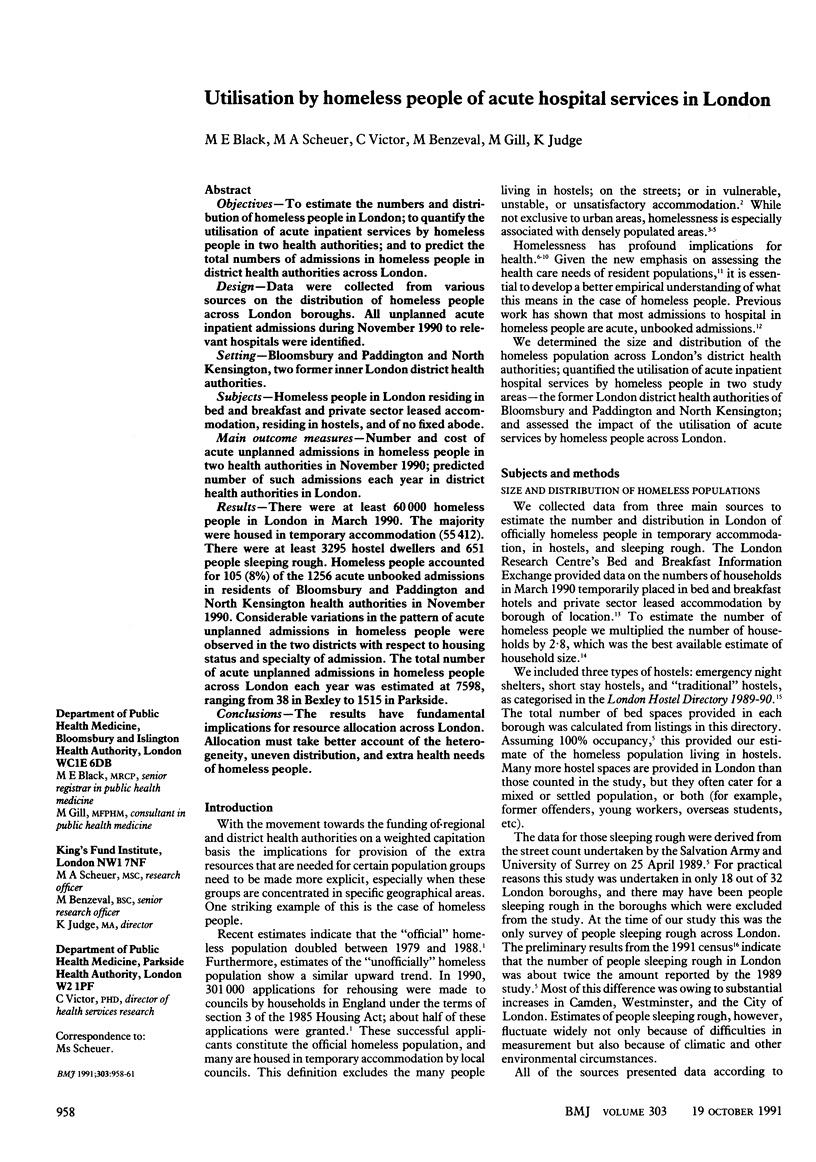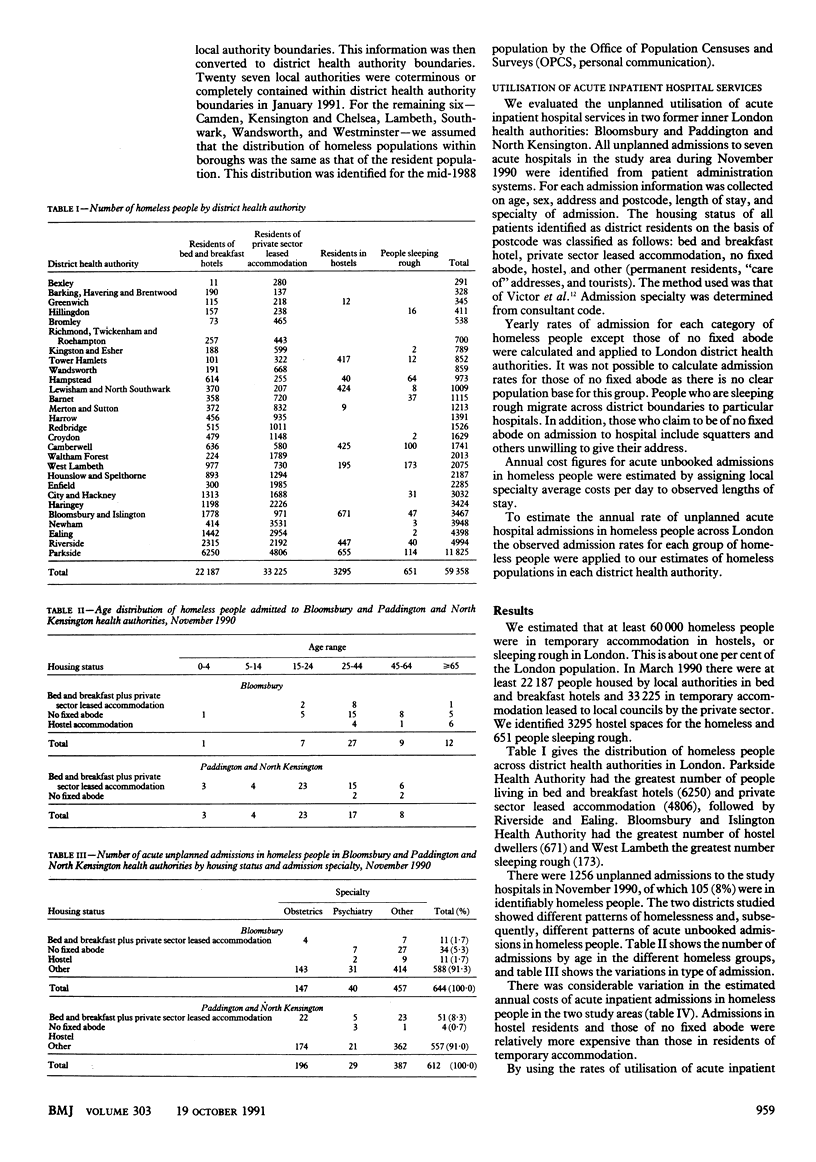Abstract
OBJECTIVES--To estimate the numbers and distribution of homeless people in London; to quantify the utilisation of acute inpatient services by homeless people in two health authorities; and to predict the total numbers of admissions in homeless people in district health authorities across London. DESIGN--Data were collected from various sources on the distribution of homeless people across London boroughs. All unplanned acute inpatient admissions during November 1990 to relevant hospitals were identified. SETTING--Bloomsbury and Paddington and North Kensington, two former inner London district health authorities. SUBJECTS--Homeless people in London residing in bed and breakfast and private sector leased accommodation, residing in hostels, and of no fixed abode. MAIN OUTCOME MEASURES--Number and cost of acute unplanned admissions in homeless people in two health authorities in November 1990; predicted number of such admissions each year in district health authorities in London. RESULTS--There were at least 60,000 homeless people in London in March 1990. The majority were housed in temporary accommodation (55,412). There were at least 3295 hostel dwellers and 651 people sleeping rough. Homeless people accounted for 105 (8%) of the 1256 acute unbooked admissions in residents of Bloomsbury and Paddington and North Kensington health authorities in November 1990. Considerable variations in the pattern of acute unplanned admissions in homeless people were observed in the two districts with respect to housing status and specialty of admission. The total number of acute unplanned admissions in homeless people across London each year was estimated at 7598, ranging from 38 in Bexley to 1515 in Parkside. CONCLUSIONS--The results have fundamental implications for resource allocation across London. Allocation must take better account of the heterogeneity, uneven distribution, and extra health needs of homeless people.
Full text
PDF



Selected References
These references are in PubMed. This may not be the complete list of references from this article.
- Connelly J., Roderick P., Victor C. Health service planning for the homeless population: availability and quality of existing information. Public Health. 1990 Mar;104(2):109–116. doi: 10.1016/s0033-3506(05)80361-0. [DOI] [PubMed] [Google Scholar]
- Shanks N. J. Medical morbidity of the homeless. J Epidemiol Community Health. 1988 Jun;42(2):183–186. doi: 10.1136/jech.42.2.183. [DOI] [PMC free article] [PubMed] [Google Scholar]
- Victor C. R., Connelly J., Roderick P., Cohen C. Use of hospital services by homeless families in an inner London health district. BMJ. 1989 Sep 16;299(6701):725–727. doi: 10.1136/bmj.299.6701.725. [DOI] [PMC free article] [PubMed] [Google Scholar]


